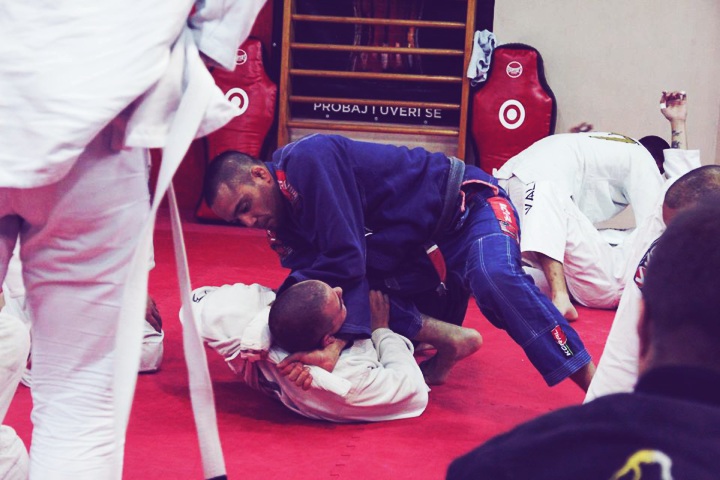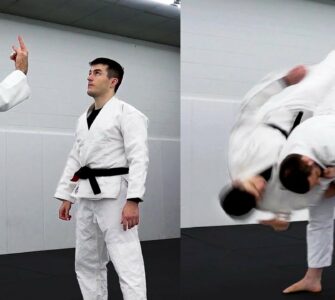Guest post by Mark Lajhner founder and chief instructor of Kaizen MMA Academy and of mmacoach.net.
Mark is a Judo black belt (Serbian national team member), Wrestler, BJJ purple belt, MMA coach and undefeated MMA fighter. You can find Mark Lajhner’s FREE MMA course Here.
This video and article feature my 4 most favorite methods of improving your grappling with lower skilled training partners. Use these methods, take care of your partner and both of you will get better.
1. ALLOW DOMINANT POSITIONS
The first method of handicapping is simply to allow your partner to place you in dominant positions and then escape from there. Your partner will try to keep the position and go for a submission while you try to escape. When you escape, or when your opponent submits you, restart in the next dominant position.
Veljko is my student who is soon to be 39 years old and he has been taking privates with me for 4 years. Each year he is becoming more and more difficult to spar with and I really have to make an effort to escape. By handicapping myself, we both get a good sparring session and if I were to only dominate him that would be a waste of training. There are however times when you can do that and I’ll talk about that later.
2. PLACE YOURSELF IN SUBMISSIONS
The second method is to put yourself in submissions and then try to escape. You can start in fully or partially locked submissions. When you escape or get submitted, place yourself in the next submission.
3. GO AFTER ONE THING ONLY
The third method is to spar by only going after a certain submission, a certain limb or a a particular move that you haven’t mastered yet. You can reveal this to your partner before sparring to make it even more difficult for you or not. Here I’m going after his right arm which means any submission on that arm will do. Besides that I’m also trying to pass his guard to the right since this my passing on that side is weaker. If the opportunity for attacking any other limb presents itself, I will forgo it. I might fake it to create a distraction, but I will not pursue it completely. So I’m only going after his right arm.
4. PARTIALLY REDUCED SPARRING
The forth method I call “partially reduced sparring”. This means that in some parts of your sparring you will reduce your defenses so your partner can act, and sometimes you will go 100%. Let your opponent take some dominant positions on you either by completely allowing him to take his preferred position or just by decreasing your defenses to let’s say 30% so he can still feel some resistance and work to overcome it. Then you fight to get out from unfavorable positions and when you do, go for a submission. Then reduce your defenses again and so on.
WHEN TO GO ALL-OUT ON LOWER SKILLED TRAINING PARTNERS
I mentioned before that there are times when you can go all-out on the less skillful training partner. By all-out I mean you will try to submit him as many times as possible, but not to hurt him of course. I usually did this in the final 7-10 days of my training camp before my MMA fights. Before that I used the methods I outlined, but in the final stage of the fight preparation I wanted to condition my brain to a “predatory”mindset and to be able to take every opportunity that is presented without hesitation.
Don’t worry about your training partners, it will not do them any harm if you go all-out on them once in a while. It will toughen them up to be in survival mode sometimes. When I first rolled with my MMA coach August Wallen from Sweden, he tapped me out around 8 times in 5 minutes without even breathing hard. So every time we rolled I tried to decrease the number of taps per round and my goal was pure survival.
















